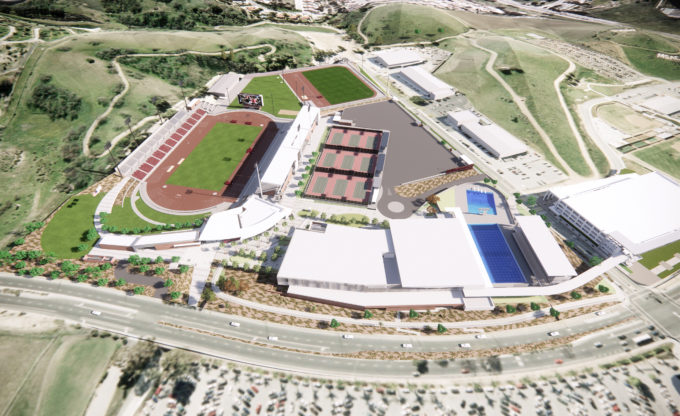A Climate Action Plan developed for Mt. San Antonio College (Mt. SAC) by HMC Architects—along with students and staff—was honored with the Board of Governors of the California Community Colleges Excellence in Energy and Sustainability Award for Faculty and Student Initiatives.
The category recognizes faculty and staff who have excelled in developing sustainability initiatives for their schools. A community college in Walnut, California, Mt. SAC won the award for the process of campus engagement in the development of the plan, which sets standards and recommendations for moving the campus towards carbon neutrality and sustainability–at every level of the institution–toward the goal of carbon neutrality by 2050.

Seeing this as both an opportunity and a responsibility, the college chose to develop the detailed and strategic framework for measuring, planning and reducing greenhouse gas emissions and related climatic impacts, and enlisted HMC to direct its development.
“It was an honor to oversee this initiative for Mt. SAC, and be recognized,” said Eera Babtiwale, vice president of sustainability at HMC Architects. “This was truly a collaborative process that was faculty led, with student input from start to finish. It’s exciting to see Mt. SAC take such a strong leadership role in climate action.”
Colleges and universities account for approximately 121 million metric tons of carbon dioxide equivalent, or nearly two percent of our nation’s total annual greenhouse gas emissions. With such a large footprint, higher education institutions play a critical role in reducing carbon emissions, and have an extraordinary opportunity to cultivate a generation of climate action leaders through research, teaching, and training on campus.

To develop the plan, HMC sustainability experts engaged members of the campus through two conferences, an eco charette, multiple flex day sessions, expert- and peer-review in-person sessions and document review, consultant contributions and direct work with the Associated Students Environmental Senate and members of the Environmental Action Group for a Livable Earth (EAGLE) club.
Students were involved in data collection for the first greenhouse gas emissions inventory, which helped establish a baseline for carbon emissions, and had continued involvement in the drafting and review of the plan and document.
The plan is already having a translational impact that goes beyond policy. HMC is using its recommendations for energy, water and waste in its design of the new Mt. SAC Athletics Complex.
Learn more about Mt. SAC’s Climate Action Plan HERE.
